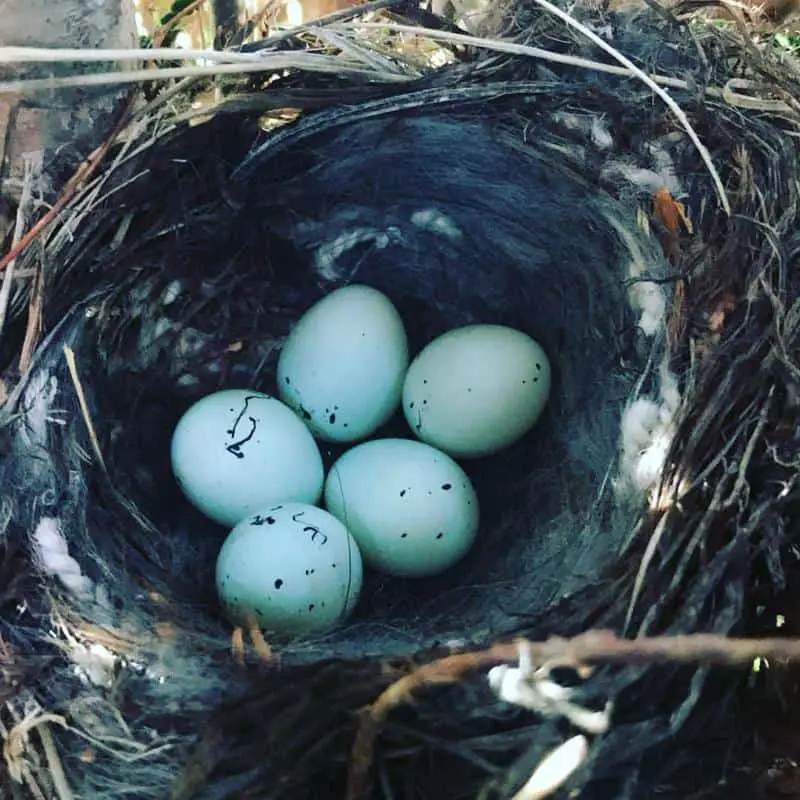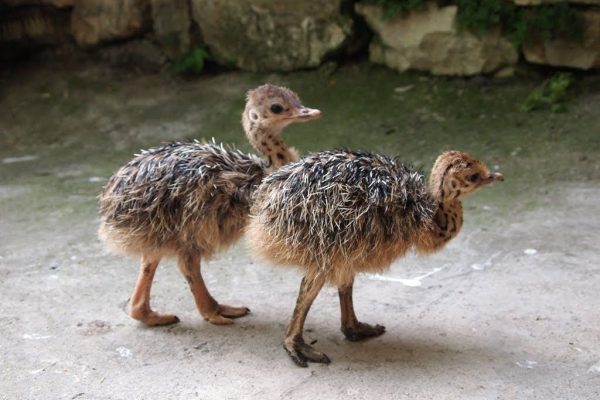When nature enthusiasts notice nests in their backyards or on hikes, they may ask, “Is that a squirrel nest up in that tree, or is it a bird nest?” There are several notable distinctions between squirrel and bird nests, even if they are similar.
This is a simple response in case you’re pressed for time: While bird nests are often cup-shaped and constructed of materials like grass, moss, feathers, and fur, squirrel nests are typically built of twigs and leaves and placed in the forks of tree branches.
Squirrel nests are more robust and straightforward than bird nests, which are more elaborate and delicate.
We’ll discuss the distinctive qualities, components, locations, uses, and more of these two prevalent kinds of animal nests in nature in this extensive guide.
What Distinctions Exist Between the Materials and Appearance?
There are some significant variations between squirrel and bird nests in terms of how they are made and how they look.
The nests of squirrels are bulkier and larger.
Compared to bird nests, squirrel nests, often called dreys, are usually bigger and thicker. These nests are constructed high up in trees, often tucked against the trunk or in branch forks.
A mixture of twigs, leaves, and moss is used to construct squirrel nests, which may have a diameter of up to two feet.
Were you aware? When it comes to creating their nests, squirrels are renowned for their ingenuity. They may modify the materials they use to build their nests according to what’s available to them; they’ve been known to use plastic bags, bark, and feathers!
Bird Nests are Cup-Shaped and Smaller.
Bird nests, on the other hand, are smaller and have a unique cup-shaped form. Usually, these nests are constructed in bushes, tree branches, or even on man-made objects like lampposts or buildings. A range of materials, such as twigs, grass, leaves, and moss, are used to build bird nests.
To reinforce and protect their nests, some birds even add feathers, dirt, or even spiderwebs.
Fun fact: Hummingbirds build the tiniest bird nests. These small nests, which resemble walnuts in size, are often seen on power wires or tree branches.
Squirrel Nests Make Use of Leaves and Twigs
To construct their nests, squirrels take leaves and twigs from their environment. To build a strong framework, they expertly weave these elements together. The nest’s structure is provided by the twigs, while the squirrels’ comfort and insulation come from the moss and leaves.
You may visit https://www.nwf.org/Educational-Resources/Wildlife-Guide/Mammals/Squirrels for further information.
Using softer materials, bird nests
Birds, on the other hand, build their nests out of softer materials. While twigs serve as the primary structural element, they also employ softer materials like moss, grass, and leaves. The birds can deposit their eggs and nurture their young in a warm and pleasant habitat thanks to these materials.
You may visit https://www.audubon.org/news/what-birds-use-build-their-nests for more details.
Where Do Bird Nests Usually Lie Compared to Squirrel Nests?
Both birds and squirrels have distinct preferences when it comes to where to construct their nests. We can better appreciate these organisms’ amazing adaptability and ingenuity if we are aware of these distinctions.
Nests are Built by Squirrels in Tree Forks
It’s well known that squirrels can construct dreys, or high-altitude nests, in trees. The best places for them to build their nests are usually the robust tree forks, where the branches join the trunk.
This gives them a haven where they may rear their young and keep them safe from predators.
These nests are lined with soft materials like moss, grass, and fur and are often constructed from twigs, leaves, and other natural materials. Because they are expert builders, squirrels will build many nests to utilize throughout the year, depending on the weather and the availability of food.
Trees and shrubs are home to bird nests.
In contrast, a greater range of places are selected by birds for their nests. Many bird species prefer to build their nests in trees and bushes, while other species, like woodpeckers, may also use tree holes or fissures.
They search for places with plenty of greenery because it offers cover and disguise. Birds often choose to construct their nests atop trees with robust branches and densely growing bushes. Depending on the kind of bird, the precise site may change, but they often look for places that provide protection from the weather and predators.
The Location of Bird Nests Varies by Species
It’s crucial to remember that depending on the species, bird nest location might vary greatly. Certain birds, for instance, prefer to construct their nests in cliffs, while others prefer to do it in man-made structures like buildings or bridges.
Every species has different needs and habits when it comes to building nests.
Visit www.audubon.org to learn more about the nesting habits of birds. There is a lot of information on birds and their nesting behaviours on this page.
Why Do Birds and Squirrels Construct Nests?
Although both birds and squirrels are recognised for their abilities to construct nests, the motivations for these behaviours are different. Let’s examine the several reasons these animals build nests and why they do so.
Nests Are Used by Squirrels to Raise Young
The main purpose of a squirrel’s nest is to provide a secure and comfortable space for its young to grow. Dreys, the name for these nests, are usually built high in trees. Twigs, leaves, and moss are among the resources that squirrels collect in order to weave them into a strong construction.
The young squirrels are protected by the drey from the weather and from any predators. When the adult squirrels are not out looking for food, it also provides them with a cosy spot to relax.
Birds Lay Eggs in Nests and Raise Chicks There
In contrast, birds construct nests mainly in order to lay eggs and raise their young. A bird’s nest building differs according to its species. Some birds weave long strands of grass or twigs into ornate nests; one such species is the weaver bird.
Others, such as the common house sparrow, construct a more basic nest out of dirt, feathers, and twigs. Nests provide a secure and solid location for birds to lay their eggs and raise their young until they are ready to fly, regardless of the building design.
Nests Offer Defence Against Weather and Predators
Nests provide shelter from inclement weather and potential predators for both squirrels and birds. Predators that live on the ground, including foxes and snakes, are kept at bay by the animals’ elevated nests. In addition, the height protects the nests from floods during periods of intense rains.
Furthermore, the nest’s construction aids with temperature regulation by offering ventilation in the summer and insulation in the winter.
It’s crucial to remember that although birds and squirrels both construct nests, there are also clear distinctions between the two species’ nesting behaviours. Recognising these variations enables us to better understand the special adaptations and tactics used by these amazing animals.
When Do Birds and Squirrels Build Their Nests?
Nest Building: Late Winter and Early Spring Squirrel Nest Building
As conscientious builders of nests, squirrels usually build their dreys in late winter or early spring. By this time, when the breeding season starts, they will have a secure place for their young.
When building their nests, squirrels often opt to use the crotches of tree trunks or the branches of towering trees. Because they are constructed of moss, twigs, leaves, and other natural materials, these nests provide insulation and weather protection.
The majority of birds nest in the spring and summer.
In contrast to squirrels, birds typically construct their nests in the spring and summer. This is due to the fact that a large number of bird species coordinate their mating season with favorable weather and food availability.
There are many different places where birds may construct their nests, including cliffs, trees, bushes, and even man-made buildings like birdhouses. Bird nests may be built out of a wide variety of materials, such as grass, twigs, feathers, mud, and even spider webs.
It’s crucial to remember that a species and a location’s specific nest-building schedule may differ. Certain birds, like robins, start constructing their nests as early as late winter, while other species may not start until the first part of spring or perhaps summer.
Temperature, food availability, and migratory patterns are some of the variables that affect the time.
You may visit websites like All About Birds or the National Wildlife Federation to learn more about squirrels and bird nests. These websites provide comprehensive details on a variety of bird and squirrel species, including their habitats and breeding habits.
How Much Time Do Bird and Squirrel Nests Last?
There are several significant distinctions in the longevity of bird and squirrel nests to take into account. Let’s examine the average lifespan of these nests in more detail.
After growing up, squirrels abandon their nests.
Dreys, or nests formed of twigs, leaves, and other natural materials, are reported to be constructed by squirrels. These nests, which are often found high up in trees, provide the squirrel and its offspring security and protection.
But the adult squirrels will leave the nest when the little ones are big enough to take care of themselves. After a few months, when the young squirrels learn to be self-sufficient and go on their own, this often occurs.
Because of this, squirrel nests are often abandoned and allowed to rot.
Certain Bird Nests Are Used to Support Several Broods
In contrast, bird nests have the potential to last longer than squirrel nests. Throughout the mating season, several bird species raise numerous broods from their nests. This implies that many generations of birds may be raised from a single nest.
For instance, in a single summer, a couple of robins may produce many broods from the same nest. The parent birds constantly clean and fix the nest to keep it stable and secure for the developing babies.
Nests Eventually Become Damaged or Decay
All nests, whether they are made by birds or squirrels, ultimately deteriorate or suffer damage. A nest’s ability to withstand environmental factors including wind, rain, and sunshine might be compromised.
Predators and other creatures may also destroy nests when they are looking for food or a place to hide.
It’s crucial to remember that a nest’s lifetime might change based on a number of variables, including as the materials utilised, the location, and the environment. While some nests would only survive a few months, others could last for many years.
Final Thoughts
Whether you stumble upon a tiny, cup-shaped cradle or a big, twiggy cluster, studying animal nests may be a delightful way to establish a connection with the natural world. Knowing the differences between squirrel and bird nests can help you recognize which furry architect is behind the next nest you see!
Comprehending the salient distinctions between a squirrel and bird behavior and ecology includes knowing things like materials utilized, positioning, purpose, and lifespan. Thus, pay attention while you’re taking a walk in the woods or just looking out the window.
One of these traditional springtime indicators could be seen working hard to provide a warm space for the next generation!






